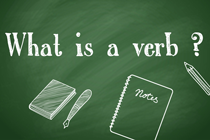Definite and Indefinite Articles

If the English language has only one thing going for it in terms of simplicity (and it may only have this one thing), it’s that its definite and indefinite articles combined only add up to four. The pronunciation and the spelling and the hundreds of irregular verbs may not make any sense at all, but at least we only have four articles where other languages have more than ten. Furthermore, English has only one definite article, which has to at least make up for the fact that we have to switch the words in a sentence all around whenever we want to ask a question. Right?
What Is an Article?
There are several possible words that can join together with a noun to create what is called a noun phrase. A noun phrase is made up of the noun and all those other words that go with it. Look at the following sentence:
- The quick, brown fox jumps over the lazy dog.
- the quick, brown fox
- the lazy dog
An article (a, an, some, the) gives information about the noun in the noun phrase. It can:
- Tell us how many there are; if the article is “a” or “an,” we know there’s only one.
- Tell us whether the noun in question is a specific one or just one in general.
- Signal to a reader or listener that a noun is just being introduced or that it’s one he’s already seen in a story.
Indefinite and Definite Articles
Indefinite Articles
English has three indefinite articles – two for singular nouns and one for plural and uncountable nouns.
For singular nouns, the indefinite articles are “a” and “an.” Now, in other languages, when choosing which indefinite article to use, you may have to think about the gender of the noun, its spelling and the spelling of any adjectives that come before it. In English, you only have to listen to the very next word. If it begins with a vowel sound, use “an,” and if it begins with a consonant sound, use “a.” It’s as simple as that. Here are a few examples:
- a man
- a blue umbrella
- a swimming pool
- a university (Because we pronounce it as though it begins with a [y], it begins with a consonant sound.)
- an apple
- an elephant
- an igloo
- an octopus
- an umbrella
- an ugly hat
- an hour (Because we don’t pronounce the [h], “hour” begins with a vowel sound.)
For plural nouns, the indefinite article is “some.” It can be followed by any adverb, adjective, plural noun or uncountable noun whatsoever (as long as there’s a noun somewhere in the vicinity to complete the noun phrase). Look at these examples:
- some men
- some blue umbrellas
- some universities
- some elephants
- some ugly hats
- some hair
- some water
- some milk
- some money
We might choose to use an indefinite article in English for one of two reasons:
1. We are introducing a noun for the first time in a story. When a joke starts out, “A man walks into a bar,” the indefinite article “a” is used for both the man and the bar because this is the first mention of both nouns.
2. We don’t care which one exactly. If you’re going to the store and your husband says, “Pick up a bottle of Chardonnay andsome olive oil,” he doesn’t care which bottle or which olive oil you get.
In either case, the noun is understood as being very general. There are millions of men, bars and bottles of Chardonnay in the world, and there are millions of gallons of olive oil. When you use an indefinite article, you are beginning to narrow things down a bit, but you’re not into specifics just yet.
Definite Articles
We have only one definite article, and it’s “the.” We use “the” for singular, plural and uncountable nouns when the reader or listener clearly understands which thing we’re talking about because:1. We’ve introduced it already. “The man rubs his head and says, ‘Ouch! Where’d that bar come from?’”
2. There is only one in existence that matters. “We visited the Sistine Chapel when we were in Rome.”
3. We describe exactly which one we’re talking about. “Let’s open the Chardonnay that Pam and Dale gave us for our anniversary.”
There are a lot of very specific rules for whether to use a definite or indefinite article, but they all fall into one of the categories mentioned. For example:
We use “the” when we use an ordinal number like first, second or third, but using an ordinal number describes exactly which one.
We also use “the” with the names of rivers, monuments and the names of certain countries, but at the heart of all those rules, there’s a broader one at work, so if you can just remember the ones given here, you’ll be all set.
Mọi thông tin chi tiết, các bạn vui lòng liên hệ:
DU HỌC UNIGLOBE
10/3 Nguyễn Thị Minh Khai, Phường Đa Kao, Quận 1, TP.HCM
ĐT: (08) 35 173 345 – 35 173 678
Email: info@uniglobe.edu.vn
Website: www.uniglobe.edu.vn






bình luận